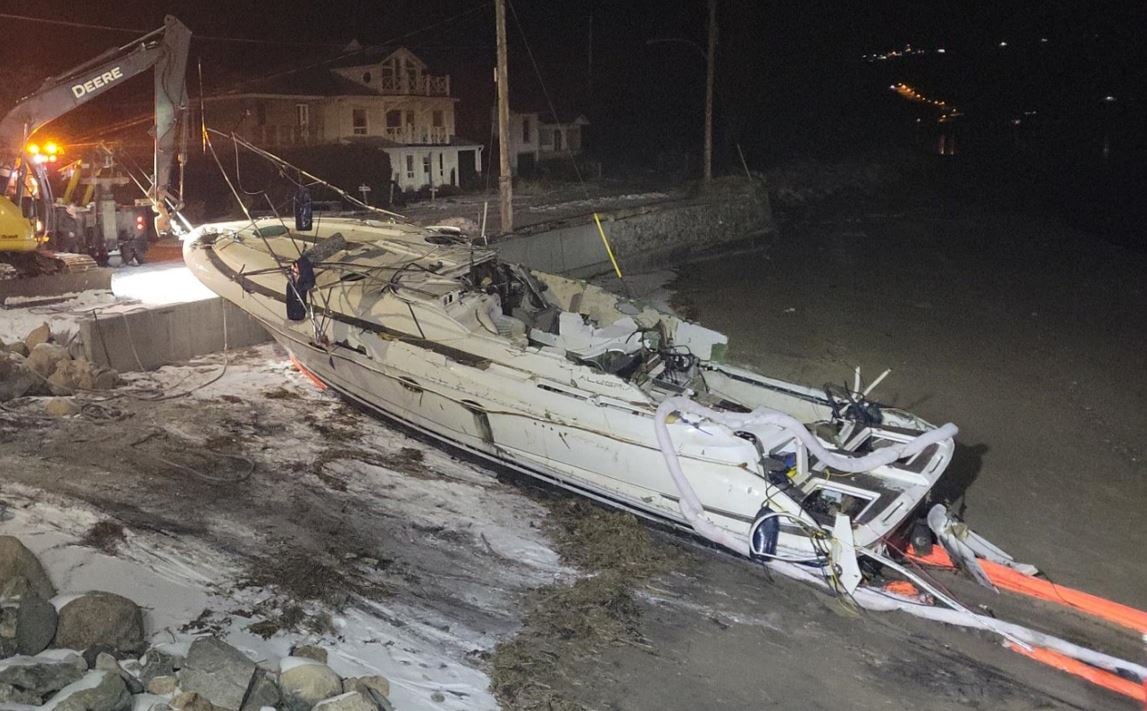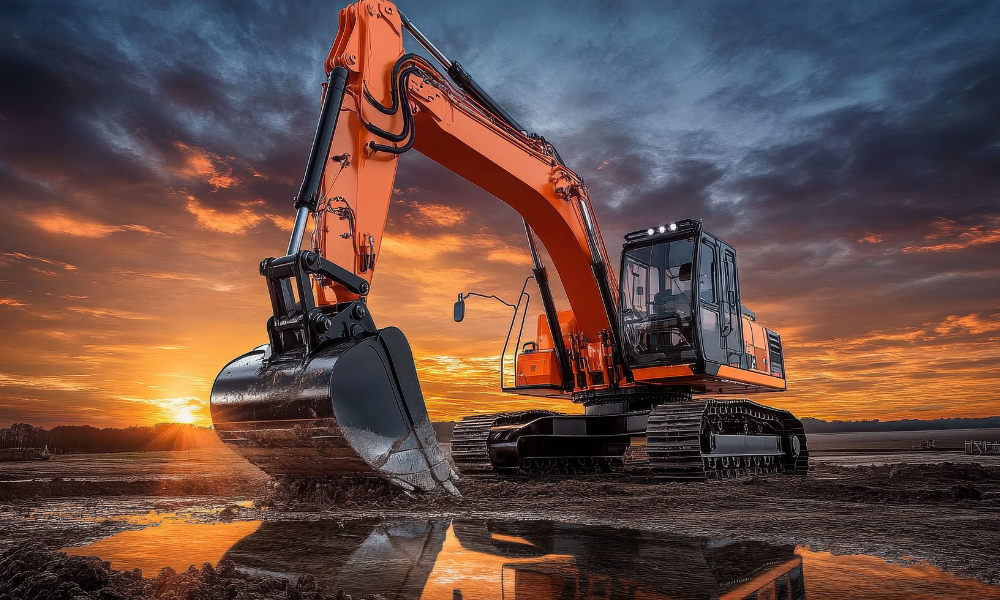The best welding respirators can protect your workers from the health risks of a dangerous job. Take your pick from our list of the top PAPR systems in this guide
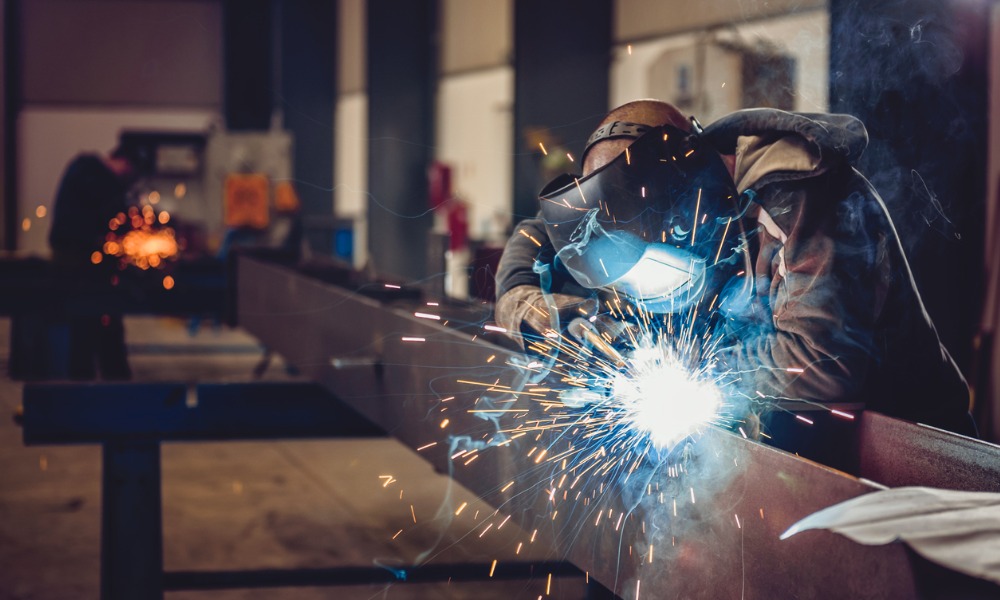
Welding is a dangerous job. The process itself generates harmful fumes, gases, and metal oxides that can pose serious risks to a worker’s respiratory health. That’s why having the right safety equipment is a must.
Respirators are among the essential types of a welder’s personal protective equipment.
In this article, Canadian Occupational Safety lists the best welding respirators for heavy-duty tasks. We will discuss the key features and specifications to give you an idea of the different types of respirators available on the market.
If you’re searching for the right protective equipment for your team, this guide can give you options. Take your pick from our list of the best respirators for heavy-duty welding.
What are the best welding respirators for industrial work?
Welding is an integral part of many industries, from automotive and manufacturing to construction and oil and gas. This makes choosing the best welding respirators for your team quite a challenge. To help you in your search, we have scoured the market for the top respirators to recommend to your team.
These products made our list of the best welding respirators. The list is arranged alphabetically. Prices are current as of July 4, 2024.
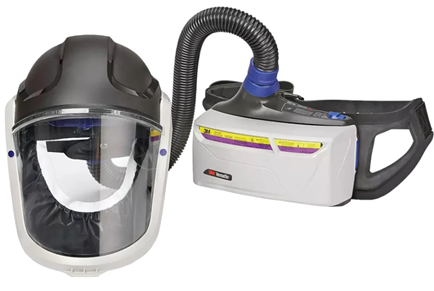
1. 3M VersaFlo TR-600 welding respirator
Key features: Slim design, chemical cartridge, heavy-duty belt with airflow channels
Price: $2,829.65 to $3,841.66
The Versaflo TR-600 from 3M is a powered air-purifying respirator (PAPR) system that also provides head, eye, and face protection. The unit uses chemical cartridges to protect against gas and vapours. Its filter captures various particulates.
The welding respirator kit comes with an adjustable heavy-duty belt with airflow channels for increased ventilation. The slim design allows welders to work in tight spaces, while the smooth exterior prevents snagging on surrounding objects.
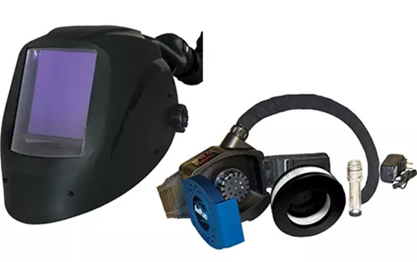
2. ArcOne AirPlus welding respirator
Key features: HEPA filter, 8-setting airflow control, auto-darkening helmet
Price range: $1,365.00 to $2,230.60
ArcOne’s AirPlus PAPR system uses a HEPA filter and comes with an eight-setting airflow control. It also uses constant airflow correction technology to provide welders with a constant supply of fresh air. The welding respirator kit comes with an auto-darkening helmet. The flexible breathing tube has a fire-retardant cover.
The unit is powered by a 14-hour lithium-ion battery with a six-hour charging time. It produces visual and audible alarms once the battery power is low.
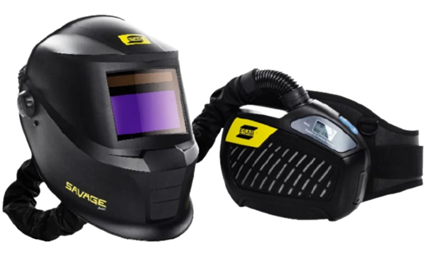
3. ESAB Savage A40 welding respirator
Key features: Two-stage filtration system, three-setting adjustable airflow, four-sensor auto-darkening helmet
Price range: $1,590.00 to $2,471.41
The Savage A40 PAPR system from ESAB filters 99.9% of fine particles from the air, making it among the best welding respirators in the market. The unit’s two-stage filtration system uses HEPA filters and comes with three-setting adjustable airflow, ranging from 170 to 230 litres per minute.
The welding respirator kit comes with an adjustable harness and multipoint helmet for improved comfort. The helmet has a four-sensor auto-darkening feature.
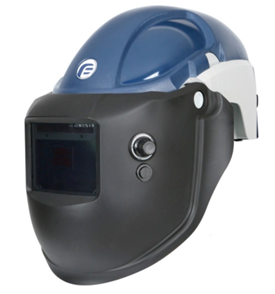
4. Gentex PureFlo 3000 welding respirator
Key features: Quick-charge HEPA filter, air-circulation system, passive hearing protection
Price range: $1,457.70 to $1,619.21
The Gentex PureFlo 3000 PAPR system uses a quick-charge HEPA filter cartridge. The welding respirator kit is configurable for use in different industries. The unit comes in a lightweight design, ensuring comfort and ease of movement. Its air circulation system cools the welder’s head and face in hot or strenuous work environments.
The unit also provides passive hearing protection to shield against noise. The LED indicator in the front notifies the user if the battery power and airflow are low.
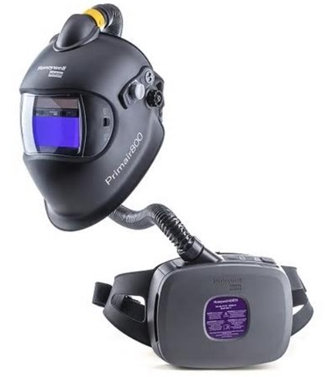
5. Honeywell Primair800 welding respirator
Key features: Easy-locking filter, adjustable air-duct, ergonomic belt
Price: $3,142.19
Honeywell’s Primair800 PAPR system uses a HEPA filter that locks into place with a quarter turn. It also comes with an adjustable air duct to keep the welders cool.
The unit has an auto-darkening helmet, with a 2.5 light state – considered the lightest in the industry. The ergonomic belt distributes weight evenly and prevents slipping. It also comes with adjustable nylon straps for additional support. The breathing tube has a twist-and-lock connector that angles the tube away from the back.
These features make the Primair800 one of the best welding respirators for heavy-duty use.
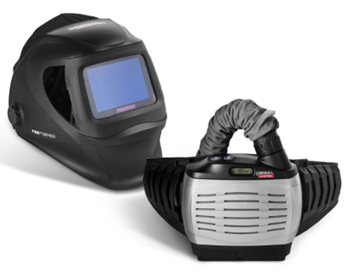
6. Lincoln Viking 3250D welding respirator
Key features: Multi-component HEPA filtration system, auto-speed adjustment blower, infrared side window
Price range: $2,155.00 to $3,775.00
Lincoln Viking’s 350D PAPR system features a multi-component HEPA filtration system that captures 99.97% of particulates as small as 0.3 microns. The clear grind shield and infrared side window help expand the welder’s field of vision. The welding respirator’s blower comes with automatic speed adjustments. It also maintains a positive pressure at two speeds: 180 and 210 litres per minute.
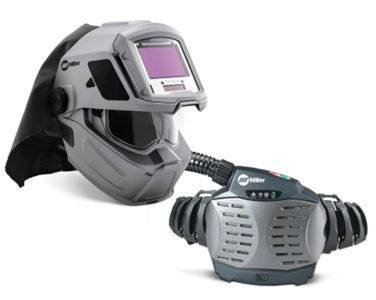
7. Miller PAPR with T94i-R welding respirator
Key features: Six pre-filters, dual air speeds, weight distribution system
Price range: $2,949.00 to $3,084.91
The PAPR with T94i-R from Miller is a welding respirator kit that comes with a lightweight blower system that uses a HEPA filter and six pre-filters. The welding respirator has dual air speeds, allowing users to adjust the airflow. The shoulder straps feature a weight distribution system to reduce fatigue. Audible and vibrating alarms notify welders of low battery levels due to reduced airflow.
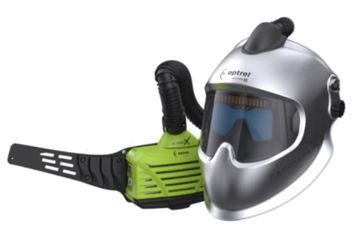
8. Optrel Crystal CLT Panoramaxx welding respirator
Key features: Patented auto-darkening feature, nose cut-out helmet, blower with HEPA filter
Price range: $2,100.00 to $2,833.00
Next on our best welding respirators list is the Panoramaxx PAPR system from Optrel Crystal featuring the brand’s auto-pilot function. This feature measures the brightness of the welding arc and adjusts the ADF automatically to maintain the correct shade value. The helmet’s nose cut-out also brings the filter lenses closer to the eyes, increasing the welder’s field of vision. The welding respirator kit comes with an E3000x blower unit. This uses a HEPA filter with 99.8% efficiency and features adjustable airflow.
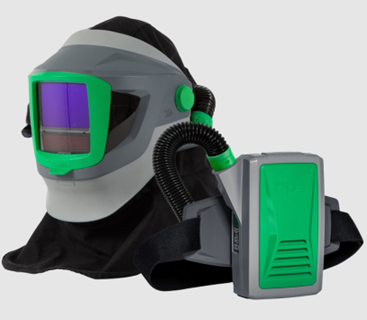
9. RPB Safety Z4 welding respirator
Key features: Lightweight, adjustable head suspension system, multiple fan speeds (PAPR versions)
Price range: $1,833.12 to $2,682.50
The Z4 welding respirator from RPB Safety is considered the lightest of its kind. It weighs just 28.4 ounces with ADF and cape. The adjustable head suspension system distributes weight evenly to reduce fatigue. Both supplied-air and PAPR versions are available.
Premium supplied-air units come with an air valve that gives the welder full control of the air volume and temperature. Premium PAPR models feature multiple fan speeds. They produce audible, visual, and vibratory alarms when the battery runs low due to reduced airflow, great for noisy work environments.
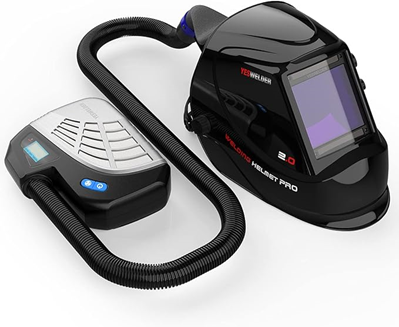
10. YesWelder M800H welding respirator
Key features: HEPA filter, provides skin and eye protection, auto-darkening helmet
Price range: $449.99 to $599.99
The M800H PAPR system from YesWelder uses a HEPA filter that captures up to 99.97% of airborne particles as small as 0.3 microns. The unit ensures flow of fresh air in the breathing zone. The welding respirator also integrates skin and eye protection features. It comes with an auto-darkening helmet with four sensors. The product is among the best welding respirators for TIG, MIG, and plasma applications.
Find out which type of respiratory protection suits your industry in this essential guide to personal safety equipment in Canada. This guide includes downloadable checklists of the PPE requirements for each industry.
What are the different types of respiratory protection?
If your workers are exposed to airborne contaminants, they must wear appropriate respiratory protection. Respirators protect employees against various air hazards, including dust, fumes, gases, mist, and oxygen-deficient work environments.
Respirators come in two types:
1. Air-purifying respirators
This type of respirator removes air contaminants by filtering out particles or adsorbing gases or vapours in cartridge or canister. Also known as APRs, these tight-fitting units come in four types:
- full-face: covers the face from above the eyes to below the chin
- half-face: covers the face from the nose to below the chin
- quarter-mask: covers the nose and mouth
- mouth-bit: fits in the mouth and comes with a nose clip
2. Supplied-air respirators
These respirators work by supplying clean air from a compressed tank or through a tube. The air must meet certain standards for purity and moisture content, including CSA Standard Z180.1-13.
Also called SARs, this type of respirator can have tight-fitting or loose-fitting respiratory inlets. The former comes with half or full facepieces. Loose-fitting versions come in the form of hoods or helmets covering the head and neck or facepieces with rubber or fabric side shields.
Filters are an essential component of respirators because these capture air contaminants. There are three types of particulate filters based on the level of oil resistance and filter efficiency:
- R series: resistant to oil and may be used in environments with up to “one shift” where there are oil particles present
- P series: oil-proof and may be used in work environments with more than one shift where there are oil particles present
- N series: not resistant to oil and may be used when there’s no oil particles in the air
In industry jargon, one shift means eight hours of continuous or recurrent use.
Find out everything you need to know about respiratory protection in Canada in this guide.
Check out product reviews of the latest respirators on our Respiratory Protection Products page.
What are the different hazards associated with welding?
The Employment and Social Development Canada (ESDC) categorizes the different causes of health hazards welders face into two types:
1. Chemical agents
Chemical agents come in the form of fumes, gases, or organic vapours. Here’s a summary of the different types, along with the potential health effects:
|
CHEMICAL HAZARDS ASSOCIATED WITH WELDING |
|||
|
Chemical |
Type |
Source |
Health effects |
|
Aldehydes (including formaldehyde) |
Organic vapour |
|
Eye and respiratory irritation |
|
Cadmium oxide |
Fume |
|
|
|
Carbon monoxide |
Gas |
|
|
|
Chromium |
Fume |
|
|
|
Copper |
Fume |
|
|
|
Diisocyanates |
Organic vapour |
Metal with polyurethane paint |
|
|
Fluorides |
Fume |
|
|
|
Iron oxide |
Fume |
All iron or steel welding processes |
|
|
Magnesium oxide |
Fume |
Magnesium or aluminum alloys |
|
|
Manganese |
Fume |
|
|
|
Nickel |
Fume |
|
|
|
Nitrogen oxide |
Gas |
Formed in the welding arc |
|
|
Ozone |
Gas |
Formed in the welding arc |
|
|
Phosgene |
Organic vapour |
Metal with residual degreasing solvents |
Eye, nose, and respiratory system irritation |
|
Phosphine |
Organic vapour |
Metal coated with rust inhibitors |
|
|
Zinc oxide |
Fume |
Galvanized and painted metals |
Metal fume fever |
Read next: How to pick the best fume hoods for hazardous worksites
2. Physical agents
These consist of the physical hazards that come with the job, including:
Hot surfaces and environments
Unprotected contact with heated metal causes skin burns. That’s why it’s important for welders to wear safety gloves and protective clothing that provides proper insulation. Prolonged exposure to heat, coupled with strenuous activity, can raise the internal body temperature and lead to heat-related illnesses. These include:
- heat cramps
- heat edema
- heat exhaustion
- heat rush
- heat stroke
- heat syncope (fainting)
Noise
Welding involves processes that produce high noise levels. Excessive and long-term exposure to noise can lead to hearing loss. Loud noise can also have non-auditory health effects such as cardiovascular diseases, stress, and sleeping problems.
Radiation
Welders are also exposed to intense ultraviolet, visible light, and infrared radiation. That’s why appropriate eye and face protection is important.
What to consider when choosing the best welding respirators
The best welding respirators for your team must provide adequate protection for the tasks they are doing. To find the right respirators, you should consider these factors:
- the type of hazard your workers face
- filtration requirements
- fit and comfort
- the equipment’s weight
- welding-specific features
You may also have to consider the cost and maintenance of the welding respirators. Picking the right respirator enhances safety and productivity within your team, so consider that a worthy investment. After all, choosing the best welding respirators means putting your workers’ health and safety first.
What’s your pick for the best welding respirators for heavy-duty work? Let us know in the comments.
Related Articles:
The best safety glasses for construction workers
The most comfortable work boots for construction sites
The best hard hats to recommend to your construction team
The best work gloves for heavy-duty protection
The best hearing protection for construction workers
The best welding helmets for industrial protection
Roof safety equipment: an essential guide for roofers in Canada
The best ear protection for loud machinery
The 10 best respirators for painting projects


